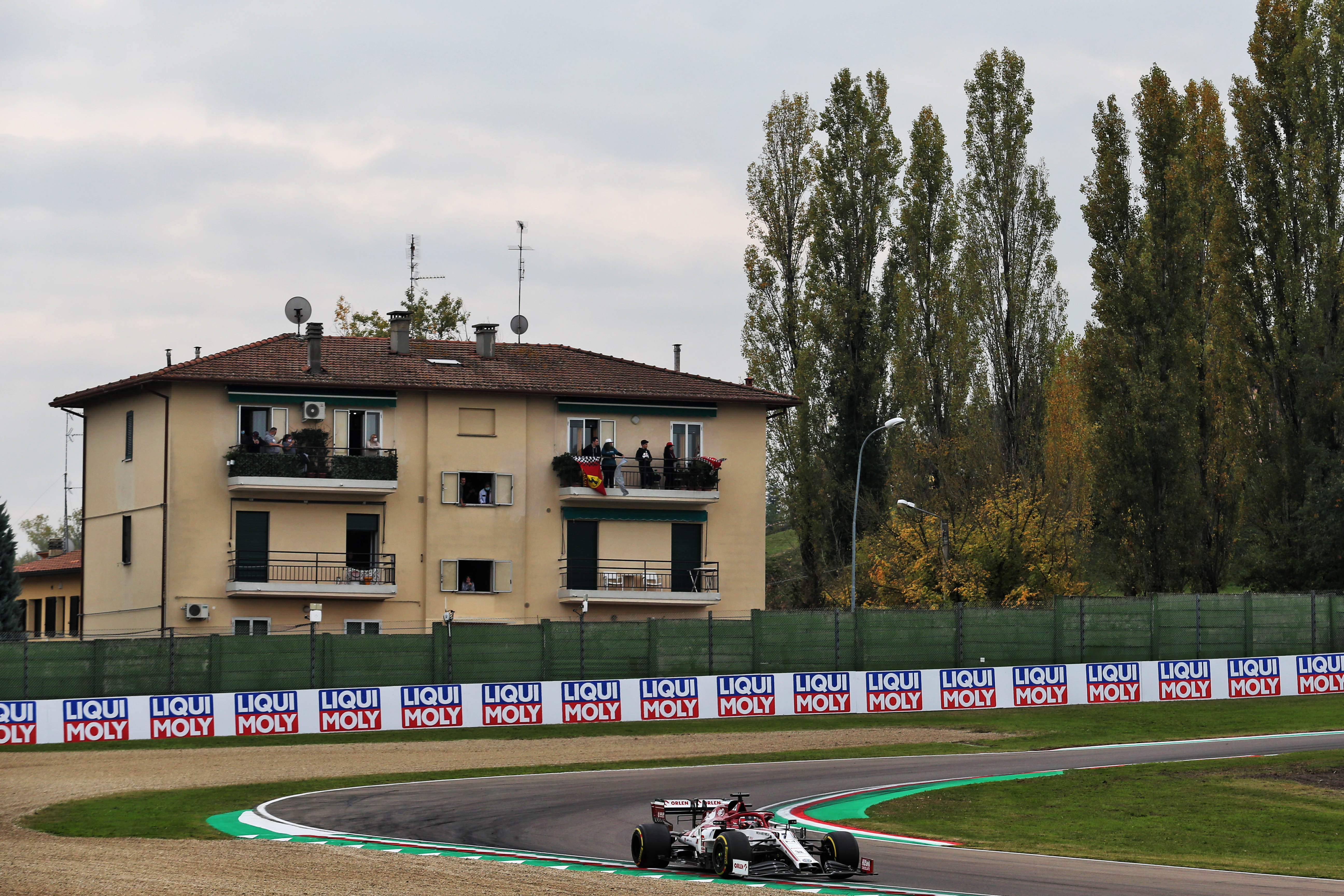Lance Stroll’s high-speed run downhill to Acque Minerale while marshals worked at the side of the track makes for uncomfortable ‘bonus footage’ from Formula 1’s Imola return.
Towards the end of the Emiliana Romagna Grand Prix’s safety car period, lapped cars were given the usual instruction to overtake and catch up to the back of the pack.
However, four marshals were still working at the left-hand side of the track between Piratella and Acque Minerale, where George Russell had crashed and scattered fragments of car and bollard, with one of the marshals on the track itself sweeping off debris.
GEORGE: "I don't know what to say" 🎧 😳 🙈#ImolaGP 🇮🇹 #F1 pic.twitter.com/qefrtEPvCD
— Formula 1 (@F1) November 1, 2020
Lapped cars may only be given the instruction to overtake the safety car “if the clerk of the course considers it safe to do so”, so Turns 10 and 11, the left-hand kink down the hill and the first part of Acque Minerale, were policed with double-waved yellow flags.
So even though drivers that have unlapped themselves should “make every effort” to catch the pack up, according to the regulations, they are also required to drive “at an appropriate speed”, which means observing and adhering to trackside signals.
Double-waved yellow flags require a driver to reduce their speed “significantly” and be prepared to stop because there may be a hazard blocking the track “and/or marshals working on or beside the track”.
Kimi Raikkonen was the first lapped car on the scene and he backed off at Piratella and even more as he approached the area the marshals were working. With Antonio Giovinazzi, Nicholas Latifi and Romain Grosjean in tow, Raikkonen’s actions ensured that train of cars proceeded through at considerably reduced speed.

Giovinazzi and Grosjean were warned of “debris” while Grosjean was also informed of “double yellow Turn 11” – but the others were not, so were relying on noticing the trackside panels.
Grosjean even told his Haas team “OK, it’s a bit dangerous to leave marshals on” after driving past, while Sebastian Vettel – who was a little further behind so arrived on the scene on his own – backed off through the kink and said over the radio: “Tell them to watch out, that marshals are on the track.”
The instructions to Giovinazzi and Grosjean indicate that the teams did have some information relating to Turns 10 and 11 but some drivers were either told a small amount of detail or nothing at all.
In Stroll’s case, he was a long way behind the other lapped cars because he received a delayed message to overtake and then spent a few seconds waiting to pass Charles Leclerc, who he thought was Vettel and therefore needed to stay behind.
Once clear of the pack Stroll was instructed to “push to catch” the other cars, but received no information about debris, doubled waved yellows or marshals on the track from his Racing Point team – and either did not see or ignored the light panels on the right-hand side as he approached.
In fact, Stroll’s onboard suggests he barely slowed as he approached the marshals working trackside before lifting slightly between Turns 10 and 11.
The sector times also indicate how hard Stroll was pushing as while he backed off to a small degree at that part of the track his middle sector was 28.048s – seven seconds quicker than Raikkonen, 3.5s quicker than Vettel and only one second slower than Stroll’s fastest middle sector in the entire grand prix.
This wasn’t caught on the world feed but was brought to wider attention initially by Reddit user BlackGT86. Now it’s known, it needs to be acted upon.
The Race has contacted the FIA for an explanation but it seems like a matter where the process was in line with the regulations but was not enough for this specific set of circumstances. That indicates that a mechanism like double-waved yellows is good on paper but doesn’t always work in practice.
For example, on a flat stretch of track, it’s likely a lot easier for drivers to see a light panel/marshal post indicating double-waved yellows.
So, could the system be reinforced with a message to the teams explicitly warning of marshals on track in a certain location, rather than relying on trackside signals? There seems to be no excuse not to in an age of detailed radio communication.
And even if we assume that Stroll’s the only one in the wrong here and should have noticed the signals given Raikkonen did, there are still lessons.
The speed he travelled through that part of the track was unsafe and not in line with double-waved yellows. So why was his transgression not noticed at the time and investigated? Should it be raised at the next drivers’ briefing?
It needs to be addressed or it will set a dangerous precedent that instructions via flags/light panels can be ignored without consequence for the driver. There’s no trade-off for safety, especially when it comes to the risk of a car travelling at speed when marshals are on track.


